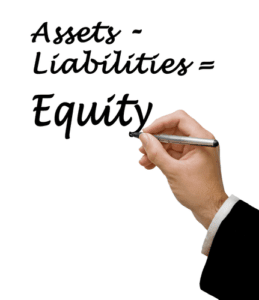
Tax depreciation is commonly calculated differently than depreciation for financial reporting. Fixed assets, also known as noncurrent assets, are expected to be in use for longer than one year. As a result, unlike current assets, fixed assets can undergo depreciation over time. Examples of net assets include buildings, machinery, and vehicles, minus accumulated depreciation.
Interpreting the Fixed Asset Turnover Ratio
For example, a company that purchases a printer for $1,000 using cash would report capital expenditures of $1,000 on its cash flow statement. Companies that more efficiently use their fixed assets enjoy a competitive advantage over their competitors. An understanding of what is and isn’t a fixed asset is of great importance to investors, as it impacts the evaluation of a company.
What are fixed assets?
This financial ratio can be helpful internally when budgeting and forecasting. It could potentially be useful for readers of financial statements in predicting if an organization will need to make a large capital outlay in the near future. Fixed assets appear on the company’s balance sheet under property, plant, and equipment (PP&E) holdings. These items also appear in the cash flow statements of the business when they make the initial purchase and when they sell or depreciate the asset. In a financial statement, noncurrent assets, including fixed assets, are those with benefits that are expected to last more than one year from the reporting date.

What Is the Formula for Fixed Assets?
- Because of ongoing depreciation, the net book value of an asset is always declining.
- For an organization, its net fixed assets play a vital role not just in its overall net worth but also in its daily activities.
- In addition to business operations, fixed assets can benefit a company through accounting treatments such as capitalization and depreciation.
- Return on invested capital gives a sense of how well a company is using its money to generate returns.
With the exception of land, fixed assets are depreciated over the length of their useful lives. This is achieved by calculating the net fixed assets, a metric that takes the purchase price of the fixed assets — as well as any improvements — and deducts the accumulated depreciation to obtain the true value. The declining balance method is good for companies with assets that lose value quickly in the early years, such as vehicles or technology like computers. You’ll record larger depreciation expenses during the early years of an asset’s useful life and smaller depreciation expenses later. The declining balance method is considered an accelerated depreciation system.
What Are Fixed Assets?
Sometimes depreciation write-offs are also viewed partly as compensation for this risk. Different companies can have different fixed assets based on their nature of business and their requirements. However, few of the most common ones found in fixed assets accounting are as mentioned below.

How do you calculate fixed assets?
This is because tangible assets are subject to depreciation, which reduces the asset’s value over time. Reports such as the fixed asset roll forward discussed above can be generated quickly with software, making analysis and research less of a cumbersome task. Current assets are assets that the company plans to use up or sell within one year from the reporting date. This category includes cash, accounts receivable, and short-term investments. These are fixed assets because they are intended to help the business make food in order to earn income. Presumably, the business will own and use those items for many years, so they are listed as fixed assets on the balance sheet.
- This includes plant, machinery, vehicles and equipment, installations and physical infrastructures, the value of land improvements, and buildings.
- The percentage is then multiplied by the asset’s depreciable base, cost less salvage value, to arrive at the depreciation to be recognized each period.
- While tangible assets are the main type of fixed asset, intangible assets can also be fixed assets.
- One such policy is the capitalization policy, which should include the process and criteria for recording fixed assets, and guidelines for keeping track of fixed assets throughout their useful life.
- Depreciation is when an asset decreases in value, usually because of normal wear and tear.
- One such critical component is fixed assets, which can be complex and time-consuming to manage without the right tools and techniques.
But the value of land improvements is included in the statistical concept of fixed capital, is regarded as the creation of value-added through production. Simplest is the Straight-line depreciation, separating the fixed asset’s cost by the number of accounting years it is expected to last. Current assets are short-term assets, which are held for less than a year, whereas fixed assets are typically long-term assets, held for more than a year. To understand any concept, it is vital to understand both extremes of opinions. Hence, let us also discuss the disadvantages found in fixed assets accounting through the discussion below.
Capital Investment and Fixed Assets

Companies usually report their non-current assets as property, plant and equipment on the balance sheet. Yet, as assets lose value as time progresses, companies also report the depreciation and amortization fixed asset accounting expenses. Regardless of their physical form, the assets of a company must be accurately valued so that investors and financial analysts can properly assess the intrinsic value of the company.